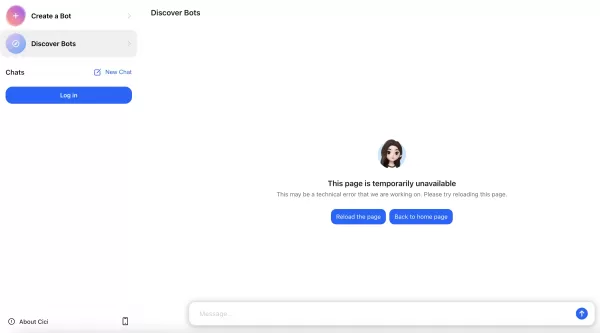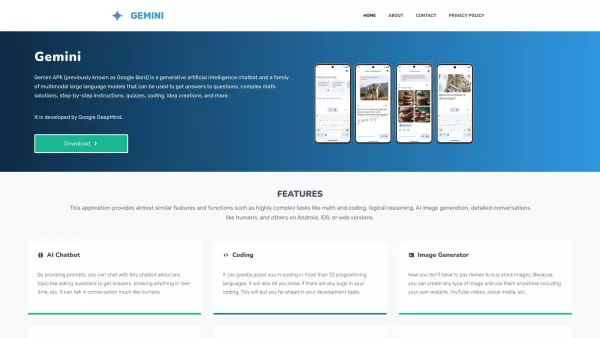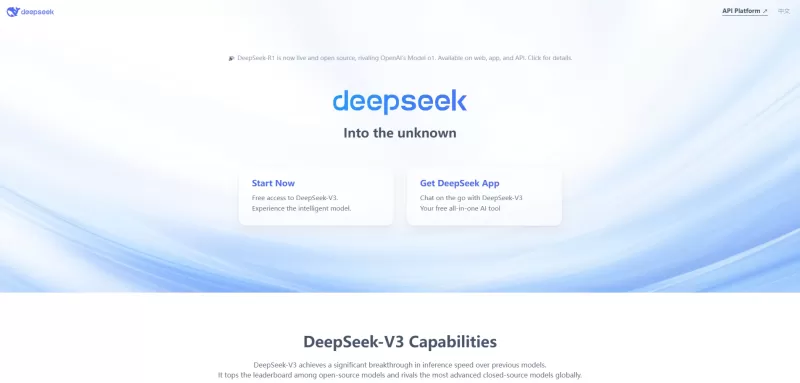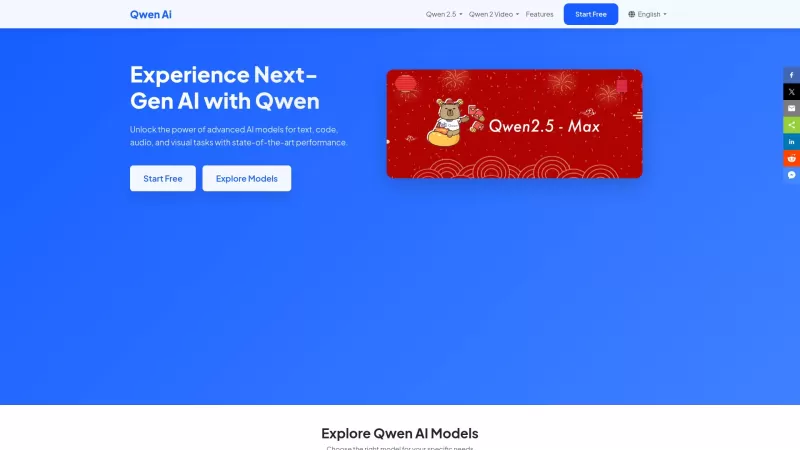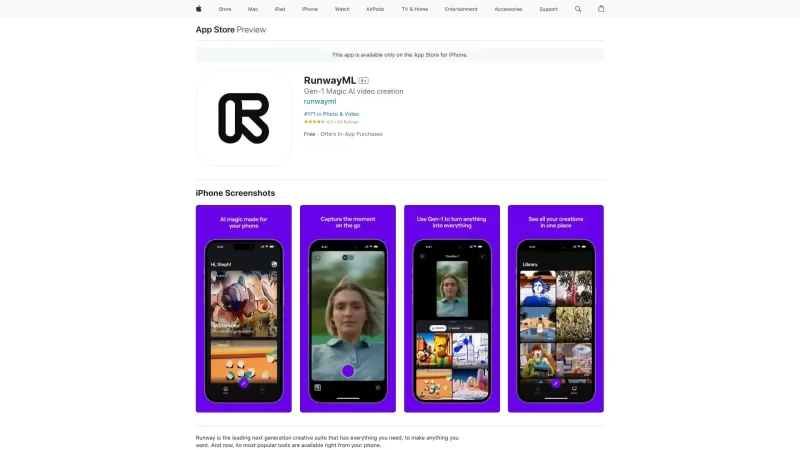Anthropic's AI Claude: Key Insights and Details
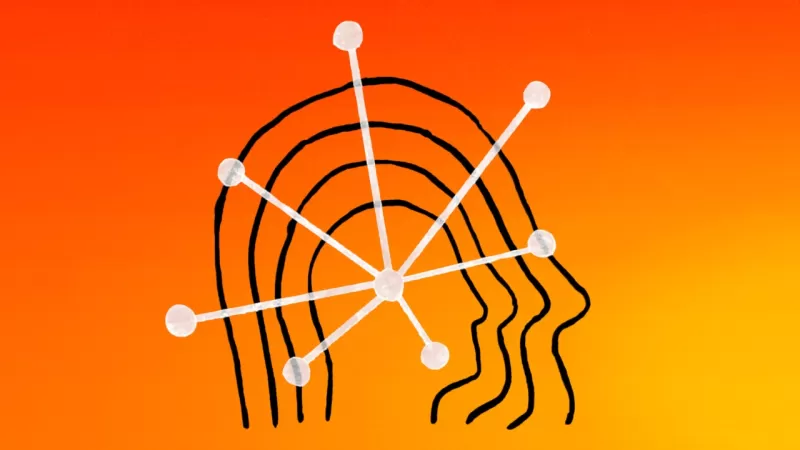
If you're into AI and you've heard about Anthropic's Claude models, you know they're a big deal in the world of generative AI. These models can do everything from captioning images to writing emails, solving math problems, and even tackling coding challenges. With Anthropic constantly rolling out new models and upgrades, it can be a bit of a challenge to keep up with what each one does. That's why we've put together this guide to help you navigate the Claude family, and we'll keep it updated as new stuff comes out.
Claude Models
Anthropic's Claude models are named after literary works—Haiku, Sonnet, and Opus. Here's a quick rundown of the latest ones:
- Claude 3.5 Haiku: This is the lightweight model. It's fast and efficient but can struggle with more complex tasks.
- Claude 3.7 Sonnet: This midrange model is Anthropic's current flagship. It's a hybrid reasoning model, which means it can give you quick answers or take a bit of time to think things through. You can actually toggle its reasoning abilities on or off, depending on what you need. When it's thinking, it might take a few seconds to a couple of minutes to break down your question and check its answers.
- Claude 3 Opus: This is the largest model, but right now, it's not the most capable one. Don't worry, though—Anthropic's working on an update that should change that.
Claude 3.7 Sonnet is pretty special because it's the first of Anthropic's models to use this reasoning technique. Even when you turn off its reasoning, it's still one of the top performers in the tech industry. Back in November, Anthropic released an improved version of Claude 3.5 Haiku, which is faster and more expensive but can't analyze images like the other two.
All Claude models come with a standard 200,000-token context window, which is like giving them a 600-page novel to read before they generate new content. They can follow multistep instructions, use tools like stock ticker trackers, and even produce structured output in formats like JSON. Just keep in mind that they can't access the internet, so they're not great for current events, and they can only generate simple line diagrams, not full images.
When it comes to speed and understanding complex instructions, Claude 3.7 Sonnet is faster and better than Claude 3 Opus. Haiku is the quickest of the bunch, but it can struggle with more sophisticated prompts.
Claude Model Pricing
You can access the Claude models through Anthropic's API or managed platforms like Amazon Bedrock and Google Cloud's Vertex AI. Here's what you'll pay for using the Anthropic API:
- Claude 3.5 Haiku: $0.80 per million input tokens (~750,000 words) or $4 per million output tokens.
- Claude 3.7 Sonnet: $3 per million input tokens or $15 per million output tokens.
- Claude 3 Opus: $15 per million input tokens or $75 per million output tokens.
Anthropic also offers prompt caching and batching to help you save on runtime costs. Prompt caching lets you store and reuse specific contexts across API calls, while batching lets you process groups of lower-priority (and cheaper) requests at once.
Claude Plans and Apps
If you're an individual or a company just looking to interact with the Claude models through apps on the web, Android, or iOS, Anthropic offers a free Claude plan. It's got some rate limits and usage restrictions, but it's a good way to get started.
If you want more, you can upgrade to one of their subscription plans:
- Claude Pro: This costs $20 per month and gives you 5x higher rate limits, priority access, and previews of new features.
- Claude Team: For small businesses, this costs $30 per user per month. It adds a dashboard for billing and user management, integrations with data repositories like codebases and CRM platforms, and a toggle for verifying AI-generated claims.
- Claude Enterprise: For larger companies, this plan lets you upload proprietary data for Claude to analyze. It also comes with a larger 500,000-token context window, GitHub integration, and the Projects and Artifacts features.
Both Pro and Team subscribers get access to Projects, which lets Claude use knowledge bases like style guides or interview transcripts. And everyone, including free-tier users, can use Artifacts, a workspace for editing and adding to content generated by Claude.
A Word of Caution
Like all generative AI models, there are some risks to using Claude. They can make mistakes or "hallucinate" when summarizing or answering questions. They're also trained on public web data, which might include copyrighted or restricted material. Anthropic argues that fair-use doctrine protects them, but that hasn't stopped lawsuits from being filed. They do offer policies to protect certain customers from these legal battles, but the ethical issues of using models trained on data without permission remain.
This article was originally published on October 19, 2024, and was updated on February 25, 2025, to include new details about Claude 3.7 Sonnet and Claude 3.5 Haiku.
Related article
 Midjourney Unveils Cutting-Edge AI Video Generator for Creative Content
Midjourney's AI Video Generation BreakthroughMidjourney has unveiled its inaugural AI video generation tool, marking a significant expansion beyond its renowned image creation capabilities. The initial release enables users to transform both uploaded
Midjourney Unveils Cutting-Edge AI Video Generator for Creative Content
Midjourney's AI Video Generation BreakthroughMidjourney has unveiled its inaugural AI video generation tool, marking a significant expansion beyond its renowned image creation capabilities. The initial release enables users to transform both uploaded
 Trump Prioritizes AI Growth Over Regulation in Race to Outpace China
The Trump administration unveiled its landmark AI Action Plan on Wednesday, marking a decisive break from the Biden administration's risk-averse AI policies. The ambitious blueprint prioritizes aggressive infrastructure development, sweeping regulato
Trump Prioritizes AI Growth Over Regulation in Race to Outpace China
The Trump administration unveiled its landmark AI Action Plan on Wednesday, marking a decisive break from the Biden administration's risk-averse AI policies. The ambitious blueprint prioritizes aggressive infrastructure development, sweeping regulato
 YouTube Integrates Veo 3 AI Video Tool Directly Into Shorts Platform
YouTube Shorts to Feature Veo 3 AI Video Model This SummerYouTube CEO Neal Mohan revealed during his Cannes Lions keynote that the platform's cutting-edge Veo 3 AI video generation technology will debut on YouTube Shorts later this summer. This follo
Comments (39)
0/200
YouTube Integrates Veo 3 AI Video Tool Directly Into Shorts Platform
YouTube Shorts to Feature Veo 3 AI Video Model This SummerYouTube CEO Neal Mohan revealed during his Cannes Lions keynote that the platform's cutting-edge Veo 3 AI video generation technology will debut on YouTube Shorts later this summer. This follo
Comments (39)
0/200
![CharlesHernández]() CharlesHernández
CharlesHernández
 August 22, 2025 at 9:01:25 PM EDT
August 22, 2025 at 9:01:25 PM EDT
Claude's versatility is wild! Captioning images and coding? It's like having a super-smart buddy. But I wonder, how does it stack up against other AI giants in real-world tasks? 🤔


 0
0
![EdwardBaker]() EdwardBaker
EdwardBaker
 August 9, 2025 at 3:01:00 PM EDT
August 9, 2025 at 3:01:00 PM EDT
Claude's capabilities are wild! Writing emails, coding, and solving math? It's like having a super-smart buddy in your pocket. Curious how it stacks up against other AI models in real-world tasks.


 0
0
![RalphPerez]() RalphPerez
RalphPerez
 August 2, 2025 at 11:07:14 AM EDT
August 2, 2025 at 11:07:14 AM EDT
Claude's versatility is wild! From coding to captions, it’s like having a super-smart buddy. But I wonder, how does it stack up against other AI in real-world tasks? 🤔


 0
0
![RaymondAllen]() RaymondAllen
RaymondAllen
 July 27, 2025 at 9:20:21 PM EDT
July 27, 2025 at 9:20:21 PM EDT
Claude's capabilities are wild! Captioning images and coding? It's like having a super-smart buddy who can do it all. Excited to see where Anthropic takes this next! 😎


 0
0
![JustinMartin]() JustinMartin
JustinMartin
 April 19, 2025 at 11:00:46 PM EDT
April 19, 2025 at 11:00:46 PM EDT
क्लॉड मेरा व्यक्तिगत AI सहायक है! यह ईमेल लिखने से लेकर गणित की समस्याएं हल करने तक सब कुछ कर सकता है। कभी-कभी यह मेरे लिए थोड़ा तकनीकी हो जाता है, लेकिन कुल मिलाकर, यह एक जीवन रक्षक है। अगर आपको AI में रुचि है, तो इसे जरूर आजमाएं! 😊


 0
0
![RogerJackson]() RogerJackson
RogerJackson
 April 19, 2025 at 1:25:14 AM EDT
April 19, 2025 at 1:25:14 AM EDT
클로드는 정말 도움이 돼! 이메일 작성부터 수학 문제까지 다 처리해줘. 가끔 너무 전문적이어서 이해하기 힘들 때도 있지만, 전체적으로 AI에 관심이 있다면 꼭 써봐야 해! 😄


 0
0

If you're into AI and you've heard about Anthropic's Claude models, you know they're a big deal in the world of generative AI. These models can do everything from captioning images to writing emails, solving math problems, and even tackling coding challenges. With Anthropic constantly rolling out new models and upgrades, it can be a bit of a challenge to keep up with what each one does. That's why we've put together this guide to help you navigate the Claude family, and we'll keep it updated as new stuff comes out.
Claude Models
Anthropic's Claude models are named after literary works—Haiku, Sonnet, and Opus. Here's a quick rundown of the latest ones:
- Claude 3.5 Haiku: This is the lightweight model. It's fast and efficient but can struggle with more complex tasks.
- Claude 3.7 Sonnet: This midrange model is Anthropic's current flagship. It's a hybrid reasoning model, which means it can give you quick answers or take a bit of time to think things through. You can actually toggle its reasoning abilities on or off, depending on what you need. When it's thinking, it might take a few seconds to a couple of minutes to break down your question and check its answers.
- Claude 3 Opus: This is the largest model, but right now, it's not the most capable one. Don't worry, though—Anthropic's working on an update that should change that.
Claude 3.7 Sonnet is pretty special because it's the first of Anthropic's models to use this reasoning technique. Even when you turn off its reasoning, it's still one of the top performers in the tech industry. Back in November, Anthropic released an improved version of Claude 3.5 Haiku, which is faster and more expensive but can't analyze images like the other two.
All Claude models come with a standard 200,000-token context window, which is like giving them a 600-page novel to read before they generate new content. They can follow multistep instructions, use tools like stock ticker trackers, and even produce structured output in formats like JSON. Just keep in mind that they can't access the internet, so they're not great for current events, and they can only generate simple line diagrams, not full images.
When it comes to speed and understanding complex instructions, Claude 3.7 Sonnet is faster and better than Claude 3 Opus. Haiku is the quickest of the bunch, but it can struggle with more sophisticated prompts.
Claude Model Pricing
You can access the Claude models through Anthropic's API or managed platforms like Amazon Bedrock and Google Cloud's Vertex AI. Here's what you'll pay for using the Anthropic API:
- Claude 3.5 Haiku: $0.80 per million input tokens (~750,000 words) or $4 per million output tokens.
- Claude 3.7 Sonnet: $3 per million input tokens or $15 per million output tokens.
- Claude 3 Opus: $15 per million input tokens or $75 per million output tokens.
Anthropic also offers prompt caching and batching to help you save on runtime costs. Prompt caching lets you store and reuse specific contexts across API calls, while batching lets you process groups of lower-priority (and cheaper) requests at once.
Claude Plans and Apps
If you're an individual or a company just looking to interact with the Claude models through apps on the web, Android, or iOS, Anthropic offers a free Claude plan. It's got some rate limits and usage restrictions, but it's a good way to get started.
If you want more, you can upgrade to one of their subscription plans:
- Claude Pro: This costs $20 per month and gives you 5x higher rate limits, priority access, and previews of new features.
- Claude Team: For small businesses, this costs $30 per user per month. It adds a dashboard for billing and user management, integrations with data repositories like codebases and CRM platforms, and a toggle for verifying AI-generated claims.
- Claude Enterprise: For larger companies, this plan lets you upload proprietary data for Claude to analyze. It also comes with a larger 500,000-token context window, GitHub integration, and the Projects and Artifacts features.
Both Pro and Team subscribers get access to Projects, which lets Claude use knowledge bases like style guides or interview transcripts. And everyone, including free-tier users, can use Artifacts, a workspace for editing and adding to content generated by Claude.
A Word of Caution
Like all generative AI models, there are some risks to using Claude. They can make mistakes or "hallucinate" when summarizing or answering questions. They're also trained on public web data, which might include copyrighted or restricted material. Anthropic argues that fair-use doctrine protects them, but that hasn't stopped lawsuits from being filed. They do offer policies to protect certain customers from these legal battles, but the ethical issues of using models trained on data without permission remain.
This article was originally published on October 19, 2024, and was updated on February 25, 2025, to include new details about Claude 3.7 Sonnet and Claude 3.5 Haiku.
 Midjourney Unveils Cutting-Edge AI Video Generator for Creative Content
Midjourney's AI Video Generation BreakthroughMidjourney has unveiled its inaugural AI video generation tool, marking a significant expansion beyond its renowned image creation capabilities. The initial release enables users to transform both uploaded
Midjourney Unveils Cutting-Edge AI Video Generator for Creative Content
Midjourney's AI Video Generation BreakthroughMidjourney has unveiled its inaugural AI video generation tool, marking a significant expansion beyond its renowned image creation capabilities. The initial release enables users to transform both uploaded
 Trump Prioritizes AI Growth Over Regulation in Race to Outpace China
The Trump administration unveiled its landmark AI Action Plan on Wednesday, marking a decisive break from the Biden administration's risk-averse AI policies. The ambitious blueprint prioritizes aggressive infrastructure development, sweeping regulato
Trump Prioritizes AI Growth Over Regulation in Race to Outpace China
The Trump administration unveiled its landmark AI Action Plan on Wednesday, marking a decisive break from the Biden administration's risk-averse AI policies. The ambitious blueprint prioritizes aggressive infrastructure development, sweeping regulato
 YouTube Integrates Veo 3 AI Video Tool Directly Into Shorts Platform
YouTube Shorts to Feature Veo 3 AI Video Model This SummerYouTube CEO Neal Mohan revealed during his Cannes Lions keynote that the platform's cutting-edge Veo 3 AI video generation technology will debut on YouTube Shorts later this summer. This follo
YouTube Integrates Veo 3 AI Video Tool Directly Into Shorts Platform
YouTube Shorts to Feature Veo 3 AI Video Model This SummerYouTube CEO Neal Mohan revealed during his Cannes Lions keynote that the platform's cutting-edge Veo 3 AI video generation technology will debut on YouTube Shorts later this summer. This follo
 August 22, 2025 at 9:01:25 PM EDT
August 22, 2025 at 9:01:25 PM EDT
Claude's versatility is wild! Captioning images and coding? It's like having a super-smart buddy. But I wonder, how does it stack up against other AI giants in real-world tasks? 🤔


 0
0
 August 9, 2025 at 3:01:00 PM EDT
August 9, 2025 at 3:01:00 PM EDT
Claude's capabilities are wild! Writing emails, coding, and solving math? It's like having a super-smart buddy in your pocket. Curious how it stacks up against other AI models in real-world tasks.


 0
0
 August 2, 2025 at 11:07:14 AM EDT
August 2, 2025 at 11:07:14 AM EDT
Claude's versatility is wild! From coding to captions, it’s like having a super-smart buddy. But I wonder, how does it stack up against other AI in real-world tasks? 🤔


 0
0
 July 27, 2025 at 9:20:21 PM EDT
July 27, 2025 at 9:20:21 PM EDT
Claude's capabilities are wild! Captioning images and coding? It's like having a super-smart buddy who can do it all. Excited to see where Anthropic takes this next! 😎


 0
0
 April 19, 2025 at 11:00:46 PM EDT
April 19, 2025 at 11:00:46 PM EDT
क्लॉड मेरा व्यक्तिगत AI सहायक है! यह ईमेल लिखने से लेकर गणित की समस्याएं हल करने तक सब कुछ कर सकता है। कभी-कभी यह मेरे लिए थोड़ा तकनीकी हो जाता है, लेकिन कुल मिलाकर, यह एक जीवन रक्षक है। अगर आपको AI में रुचि है, तो इसे जरूर आजमाएं! 😊


 0
0
 April 19, 2025 at 1:25:14 AM EDT
April 19, 2025 at 1:25:14 AM EDT
클로드는 정말 도움이 돼! 이메일 작성부터 수학 문제까지 다 처리해줘. 가끔 너무 전문적이어서 이해하기 힘들 때도 있지만, 전체적으로 AI에 관심이 있다면 꼭 써봐야 해! 😄


 0
0

